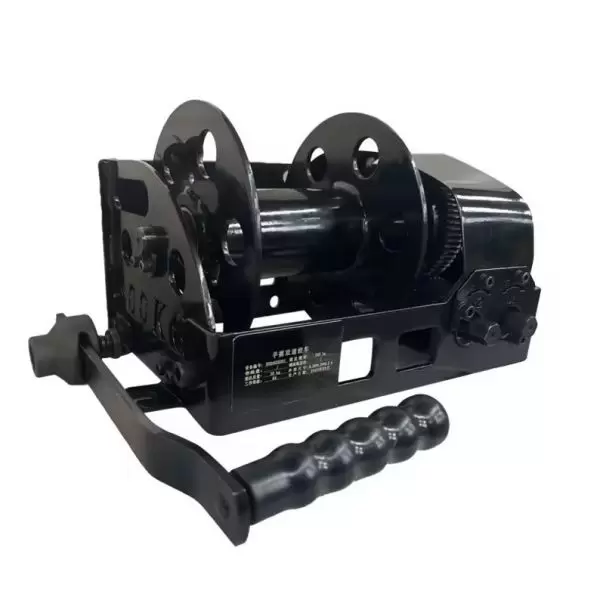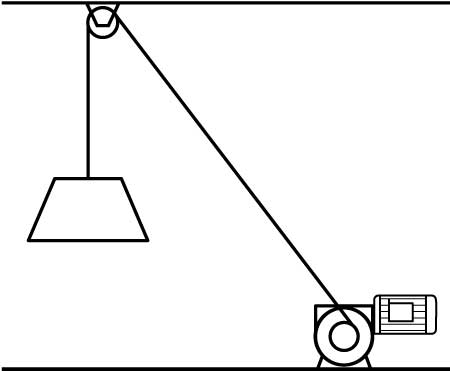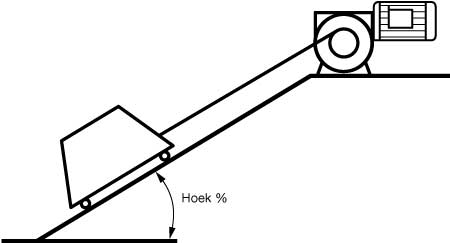Les treuils sont des dispositifs mécaniques puissants utilisés pour effectuer des tâches de levage et de traction lourdes dans de nombreux secteurs industriels. Grâce à leur fonctionnalité polyvalente et à leur conception robuste, les treuils sont devenus des outils indispensables dans les domaines de la construction, de la marine, de l'automobile et de l'industrie. Ce guide fournit un aperçu détaillé des treuils, de leurs types, de leurs applications et de leurs caractéristiques essentielles.
Qu'est-ce qu'un treuil ?
Un treuil est un outil mécanique conçu pour enrouler une corde, un câble ou une chaîne autour d'un tambour afin de soulever, de tirer ou de sécuriser des charges lourdes. Alimentés par des systèmes manuels, électriques, hydrauliques ou pneumatiques, les treuils offrent différents niveaux de puissance et de contrôle en fonction de l'application spécifique.
Types de treuils
1. Treuils électriques
Les treuils électriques sont alimentés par un moteur électrique et sont très populaires en raison de leur facilité d'utilisation et de leur précision. Ils sont couramment utilisés dans la récupération automobile, le levage industriel et les applications marines.

2. Treuils hydrauliques
Les treuils hydrauliques fonctionnent grâce à la puissance hydraulique, ce qui leur confère une résistance et une durabilité supérieures. Ces treuils sont idéaux pour les opérations lourdes, comme sur les plates-formes pétrolières, dans la construction et dans la foresterie.
3. Treuils manuels
Les treuils manuels fonctionnent à l'aide d'une manivelle, ce qui les rend légers et portables. Ils sont parfaits pour les petites charges et les zones sans accès à des sources d'alimentation.

4. Treuils pneumatiques
Alimentés par de l'air comprimé, les treuils pneumatiques sont idéaux pour les environnements dangereux où les étincelles ou l'énergie électrique peuvent présenter un risque pour la sécurité, comme les opérations minières ou offshore.
Principales applications des treuils
- Chantiers de construction: Les treuils sont utilisés pour soulever et déplacer des matériaux lourds et des machines avec précision.
- Industrie maritime: Ils sont essentiels pour les opérations d’amarrage, d’ancrage et de remorquage dans les environnements maritimes.
- Récupération automobile : Les treuils aident à tirer les véhicules hors d'un terrain difficile ou à les remorquer en lieu sûr.
- Installations industrielles: Les treuils permettent de transporter et de positionner des équipements ou des produits lourds.
- Sylviculture et exploitation forestière : Des treuils spécialisés aident à tirer les grumes et à défricher le terrain.
Caractéristiques principales des treuils de haute qualité
1. Capacité de charge
La capacité d'un treuil détermine le poids maximal qu'il peut supporter. Le choix d'un treuil avec une capacité de charge appropriée garantit sécurité et efficacité.
2. Durabilité
Des matériaux de haute qualité comme l’acier résistant à la corrosion améliorent la durée de vie d’un treuil, en particulier dans les environnements difficiles.
3. Contrôle de la vitesse
Les fonctions de contrôle de précision, telles que les réglages de vitesse variable, améliorent la sécurité et l'efficacité opérationnelle lors des tâches de levage et de traction.
4. Mécanismes de sécurité
现代绞盘包括过载保护、自动制动和安全锁等功能,以防止事故和设备损坏。



Choisir le treuil adapté à vos besoins
Lors du choix d'un treuil, tenez compte des exigences spécifiques de votre application, notamment la capacité de charge, la source d'alimentation, les conditions environnementales et les préférences de contrôle. La consultation d'experts ou de fabricants peut vous aider à identifier le treuil idéal pour vos opérations.
Les treuils sont une pierre angulaire de l'industrie moderne, permettant de soulever et de tirer des charges lourdes avec efficacité et précision. Leur adaptabilité à diverses tâches et environnements souligne leur importance dans tous les secteurs. Investissez dans un treuil de qualité qui répond à vos besoins opérationnels et améliore votre productivité.